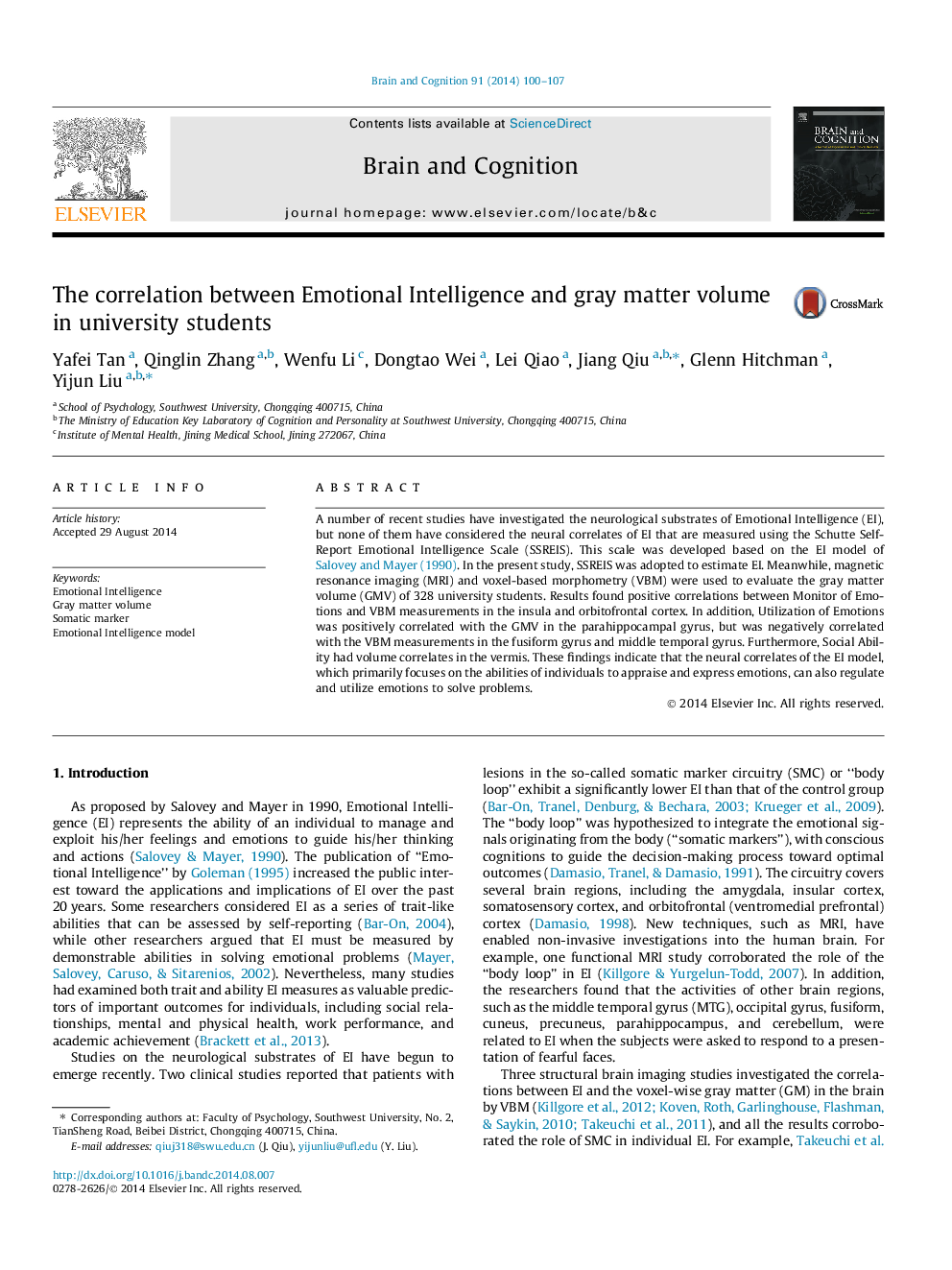| Article ID | Journal | Published Year | Pages | File Type |
|---|---|---|---|---|
| 7283203 | Brain and Cognition | 2014 | 8 Pages |
Abstract
A number of recent studies have investigated the neurological substrates of Emotional Intelligence (EI), but none of them have considered the neural correlates of EI that are measured using the Schutte Self-Report Emotional Intelligence Scale (SSREIS). This scale was developed based on the EI model of Salovey and Mayer (1990). In the present study, SSREIS was adopted to estimate EI. Meanwhile, magnetic resonance imaging (MRI) and voxel-based morphometry (VBM) were used to evaluate the gray matter volume (GMV) of 328 university students. Results found positive correlations between Monitor of Emotions and VBM measurements in the insula and orbitofrontal cortex. In addition, Utilization of Emotions was positively correlated with the GMV in the parahippocampal gyrus, but was negatively correlated with the VBM measurements in the fusiform gyrus and middle temporal gyrus. Furthermore, Social Ability had volume correlates in the vermis. These findings indicate that the neural correlates of the EI model, which primarily focuses on the abilities of individuals to appraise and express emotions, can also regulate and utilize emotions to solve problems.
Related Topics
Life Sciences
Neuroscience
Cognitive Neuroscience
Authors
Yafei Tan, Qinglin Zhang, Wenfu Li, Dongtao Wei, Lei Qiao, Jiang Qiu, Glenn Hitchman, Yijun Liu,
